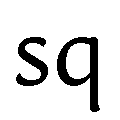

Volume 24 (2007)
Neotectonics of Poland: an overview of active faulting
Witold Zuchiewicz1, Janusz Badura2, Marek Jarosiński3
1 Institute of Geological Sciences, Jagiellonian University, Oleandry 2A, 30063 Kraków, Poland; E-mail: witold@ing.uj.edu.pl
2 Polish Geological Institute, Lower Silesian Branch, al. Jaworowa 19, 50-122 Wrocław, Poland; E-mail: janusz.badura@pgi.gov.pl
3 Polish Geological Institute, Rakowiecka 4, 00-975 Warszawa, Poland; E-mail: marek.jarosinski@pgi.gov.pl
Abstract
Neotectonic studies in Poland concern mainly manifestations of those tectonic movements that have been active in Late Neogene and Quaternary times, as well as geodetically measured recent vertical and horizontal crustal motions. Among problems of particular interest, the following should be listed: periodicity of neotectonic (mostly Quaternary) activity, estimation of the parametres of the neotectonic stress field, amplitudes and rates of Quaternary and recent movements, development of neotectonic troughs and young faults, mutual relationships among photolineaments, geological structures and recent seismicity, as well as the role of tectonic reactivation of fault zones due to human activity. Neotectonic faults in Poland have developed in Neogene and Quaternary times due to reactivation of Laramian or older structures, or in the Quaternary due to reactivation of Neogene faults. The size of throw of Quaternary faults changes from 40-50 m and >100 m in the Sudetes and the Lublin Upland, to several - several tens of metres in the Carpathians. The average rate of faulting during Quaternary times has been 0.02 to 0.05 mm/yr, what enables one to include these structures into the domains of inactive or low-activity faults. A similar conclusion can be drawn from the results of repeated precise levellings and GPS campaigns. Strike-slip displacements have been postulated for some of these faults. Isolated faults in Central Poland have shown middle Quaternary thrusting of the order of 40-50 m, and some of the Outer Carpathian overthrusts tend to reveal young Quaternary activity, as indicated, i.a., by concentrations of fractured pebbles within the thrust zones. Episodes of increased intensity of faulting took place in the early Quaternary, in the Mazovian (Holsteinian) Interglacial, and during or shortly after the Odranian (Drenthe) glacial stage. Some of the faults have also been active in Holocene times. Recent seismic activity is often related to strike-slip faults, which in the Carpathians trend ENE-WSW and NE-SW, whereas outside the Carpathians they are oriented parallel to the margin of the East-European Platform and the Sudetic Marginal Fault. Future investigations should put more emphasis on palaeoseismotectonic phenomena and practical application of neotectonic research.
| Editor-in-Chief: | Tomasz Goslar |
| Co-Editors: | Małgorzata Latałowa Wojciech Stankowski Krystyna Szeroczyńska |
| Secretary |
Mariusz Lamentowicz |